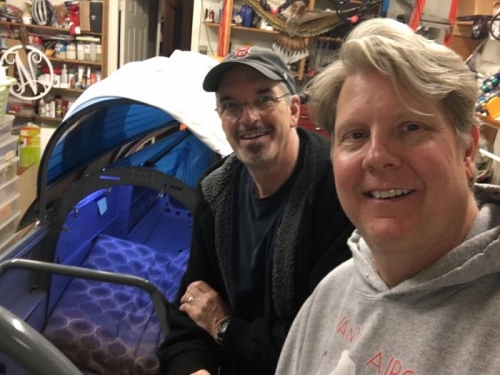
|

|
|

|
Jims RV-8

|
Date: 2-15-2020
|
Number of Hours: 3.00
|
Manual Reference:
|
Brief Description: Electrical – Rheostat and controller “design”
|

|
As Bob was in town for a few days from OKC, we started our shop session looking at the progress I had made in my red-white front cockpit lighting. We both were a little surprised that the lights on the 2-10 switch were not as bright as the lights when they went straight to power/ground. So we began doing voltage testing on all parts of the circuit. After the switch and the wires passed the test, we focused on the rheostat and the controller, substituting other controllers and rheos and testing for a brighter outcome. Well, nothing seemed to make a difference so I went back to the manufacturer and asked them, via email, why the lights are roughly 30% dimmer when run thru the rheo/controller? After a few back and forth emails, here is the answer I received :
“You really would need to hook the output to an O-scope to see what is happening. The Controller, even when you select full brightness, is already pulsing the outputs - this is what you see as 8.4 volts - it's your voltmeters interpretation of the pulsing of the lights, the technique used to give the illusion of a lower intensity of light. It's actually pulsing from 0v to 12v at a high refresh rate.
We had to design the controller to meet the needs of the 'average' intended customer and make the MOST customers happy with the one design. How this plays out is a controller that gives maximum control of their lighting at the dimmest settings (for use in the darkest of night conditions) which is what you’re seeing in the operation you describe - the best management of the LED technology (which does not actually light up under about 6v) giving illumination when it's really needed - at night, on the low end of the control.
-Dick
Engineering”
|

|

not really a pic from this session, but no other pic for here
|

|
|

|

|

|
|

|

|
Copyright © 2001-2024 Matronics. All Rights Reserved.
|

